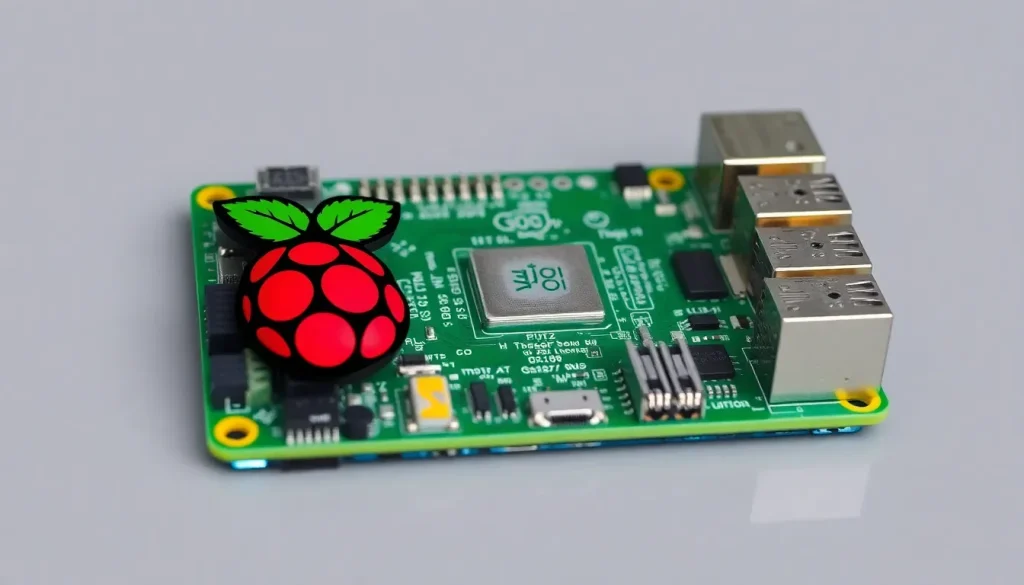Raspberry Pi 500 Plus presenta mejoras internas y externas

The Raspberry Pi 500 Plus marks a significant evolution in the world of single-board computers, integrating a sleek design with enhanced features that appeal to both beginners and seasoned tech enthusiasts. This innovation not only simplifies the user experience but also caters to a wide array of applications, from educational tools to advanced DIY projects.
As the latest iteration from the Raspberry Pi Foundation, the 500 Plus reinforces the organization's commitment to making technology accessible. Whether you're looking to set up a home automation system, dabble in programming, or create a media center, this device is designed to get you started right away, eliminating the typical technical hurdles.
- What improvements does the Raspberry Pi 500 Plus offer?
- When will the Raspberry Pi 5 be available?
- Advantages and disadvantages of the Raspberry Pi 500 Plus
- How does the Raspberry Pi 500 Plus compare to its predecessors?
- What can you do with the Raspberry Pi 500 Plus?
- Connectivity options of the Raspberry Pi 500 Plus
What improvements does the Raspberry Pi 500 Plus offer?
The Raspberry Pi 500 Plus is touted as the foundation's most refined product to date, drawing on the success of previous models. It integrates advanced components that significantly boost its performance compared to its predecessors.
At its core, the 500 Plus features a Raspberry Pi 5 board equipped with a Broadcom BCM2712 processor, boasting four 64-bit Cortex-A76 cores running at 2.4 GHz. This powerful CPU is complemented by a VideoCore VII GPU, which supports high-performance graphics APIs like OpenGL ES 3.1 and Vulkan 1.2, making it suitable for a variety of tasks.
- Processor: Broadcom BCM2712, 4x Cortex-A76, 2.4 GHz
- GPU: VideoCore VII with support for OpenGL ES 3.1 and Vulkan 1.2
- RAM: 16 GB LPDDR4x-4267
- Storage: 256 GB SSD with M.2 2280 slot
This combination of hardware not only enhances processing speed but also provides ample memory and storage for a variety of applications.
When will the Raspberry Pi 5 be available?
The Raspberry Pi 5, the heart of the 500 Plus, is already available, and its integration into the 500 Plus model has made it easier for users to access the latest technology without needing to assemble individual components. This model is built for immediate use, catering to those who may not have the time or knowledge to build a system from scratch.
With the Raspberry Pi 500 Plus already on the market for a price of 200 dollars, it opens up a new range of possibilities for both educational and practical uses. This price point reflects the significant upgrades and the convenience it offers.
Advantages and disadvantages of the Raspberry Pi 500 Plus
Like any technology, the Raspberry Pi 500 Plus has its pros and cons. Understanding these can help potential users make informed decisions.
- Advantages:
- Compact and user-friendly design.
- High processing power for diverse applications.
- Built-in SSD for faster data access.
- Support for multiple connectivity options (Wi-Fi, Bluetooth).
- Disadvantages:
- Higher price compared to older models.
- Limited expandability compared to traditional PCs.
- May require additional peripherals for full functionality.
This clear juxtaposition of benefits and drawbacks helps users weigh their options based on their specific needs.
How does the Raspberry Pi 500 Plus compare to its predecessors?
The Raspberry Pi 500 Plus stands out from previous models, particularly the original Raspberry Pi 500. The enhancements in processing power, memory capacity, and storage options create a marked difference in performance.
One of the most notable upgrades is the transition from a standard membrane keyboard to a mechanical one, which significantly improves typing experience and durability. The mechanical keyboard features:
- Gateron KS-33 Blue switches for tactile feedback.
- Custom laser-engraved keycaps for enhanced visibility.
- RGB backlighting for a personalized touch.
This focus on user experience is complemented by a microcontroller RP2040 for firmware customization, allowing users to tailor the keyboard settings to their liking.
What can you do with the Raspberry Pi 500 Plus?
The versatility of the Raspberry Pi 500 Plus is one of its strongest selling points. Here are some potential applications:
- Education: Great for teaching coding and computer science fundamentals.
- Home Automation: Can be used to control smart home devices.
- Media Center: Capable of streaming media from various services.
- Game Development: Ideal for developing and testing games.
- Robotics: Can serve as the brain for DIY robotic projects.
This broad range of applications illustrates why the Raspberry Pi 500 Plus is more than just a computing device; it's a gateway to exploring technology.
Connectivity options of the Raspberry Pi 500 Plus
The 500 Plus is designed with connectivity in mind, ensuring that users have all the necessary ports for optimal performance:
- Two micro-HDMI ports for dual 4K display support.
- Three USB Type-A ports for connecting peripherals.
- One Gigabit Ethernet port for stable internet connections.
- 40-pin GPIO header for hardware projects.
This extensive range of connectivity options makes the Raspberry Pi 500 Plus suitable for a variety of setups, from home offices to elaborate DIY projects.
For a closer look at this innovative device, check out the following video that explores its features in detail:
The Raspberry Pi 500 Plus is more than just an upgrade; it represents a commitment to enhancing user experience while maintaining accessibility. With its robust features, it promises to be a valuable tool for a wide range of users, from educators to hobbyists, ensuring its place in the evolving landscape of computing technology.




Leave a Reply